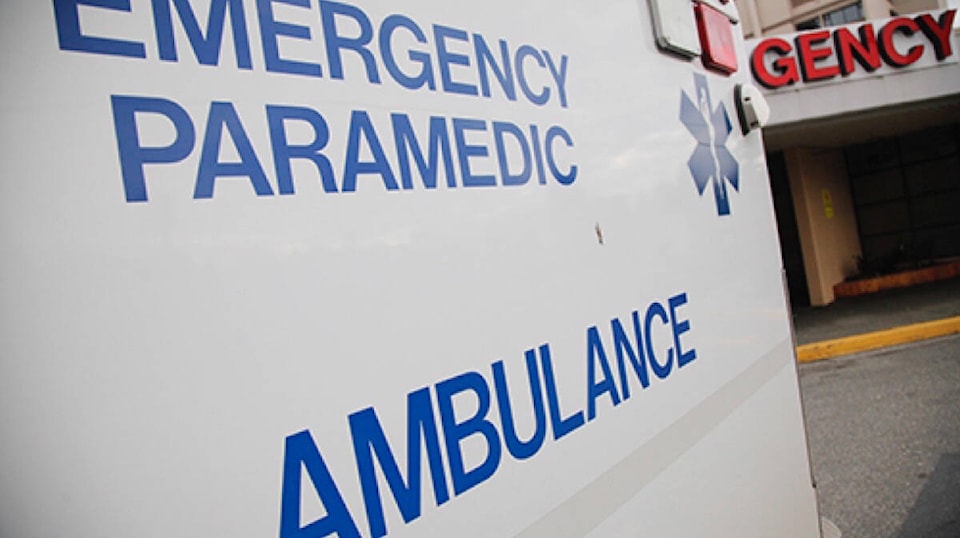The provincial government’s plan to train more paramedics for emergency health care will hopefully help ease some of the burden Surrey paramedics are shouldering every day in this booming city.
The Ministry of Post-Secondary Education and Future Skills, and Ministry of Health, issued a press release Thursday indicating the government is providing the Justice Institute of B.C. with $2 million to expand its primary care paramedic certificate program, to be delivered to more than 100 students.
“Paramedics are the backbone of our emergency health services and our government is acting to strengthen our health system,” said Selina Robinson, Minister of Post-Secondary Education and Future Skills.
The press release states that since April 2021 the Community Workforce Response Grant has delivered $20 million to train 1,665 people in health care-related jobs including primary-care paramedics, medical-laboratory assistants, health-care assistants, personal-support workers, medical-unit clerks and mental-health workers.
Shane Sander, a Surrey paramedic more than 10 years now, works out of station 249 on Surrey Memorial Hospital grounds. He’s also a regional vice president of the Ambulance Paramedics of B.C. union, which has about 4,500 members.
Between 16 and 20 ambulance crews – that’s two paramedics per crew – are tasked with covering Surrey any given day.
“Surrey is one of the biggest areas that we have to cover,” Sander, 33, told the Now-Leader recently. “There’s three ambulance stations in Surrey.”
One in White Rock, one in Cloverdale, and one at SMH.
“The main issue we’re facing right now, really it’s resources. Recruitment and retention and as well mental health. It all compounds.”
Sanders said that on any given day about 30 per cent of the B.C. ambulances, “even just in the Greater Vancouver area,” are out of service. The aim is to get to 90 per cent of the highest fidelity 911 calls within eight minutes and 59 seconds.
“From the last couple of reports that I had read, from the information that was provided to us, we were well below that benchmark. The best way that you attack that is you increase your resources and you increase the people that you have and capacity to actually handle the call volume. Surrey is one of the highest-growing municipalities in Canada in terms of population increase as you are quite aware,” Sander said.
READ ALSO: Three construction workers recognized for life-saving efforts at Surrey job site
“So for us to keep up with that population growth we need to have more paramedics in Surrey, we need to have more resources in Surrey. Because otherwise, you know, people are calling us because they need us to be there and we’re not being there for them right now.”
When called out from station 249, Sander is dispatched to the highest-fidelity call be it all the way down to White Rock, into Langley or even across the bridge to New Westminster, Delta, “Richmond even.”
Fidelity refers to severity of a call. “That one gets the first ambulance that’s available, the first, closest ambulance that’s available.”
“A Surrey ambulance can be tagged anywhere from like eight to 12 calls a day, almost a call an hour, nearly. The calls are alway sitting in queue, so as soon as you finish off with the one patient but you’re clear and ready to go, there’s another one that’s coming.”
From the minute he starts his shift to the end, Sander is attending calls.
“Back in the day, before we saw such a dramatic increase in the population, and our staffing and retention issues, we used to be able to show up in the morning, have a cup of coffee, check your car, and have a nice relaxing start to your shift. Nowadays, the minute you sign into the CAD, our computer – the minute you sign into your computer to show that you’re available, you are on a call. And essentially paramedics work the entire shift, they work their entire 12-hour shift, going call to call to call. There’s not a whole lot of breaks.”
READ ALSO: B.C. paramedics union, province agree on tentative new contract
Sander said he decided to become a paramedic after hearing from “very passionate individuals who were speaking so highly of the career. They talked about the flexibility, the fact that every day was a bit of an adventure in itself. No day is ever like the same. If there’s anybody that’s out there that’s looking for a career where one day is not the same as the other, this is such a rewarding career. You get to be there for somebody in their time of need.”
“This job is like nothing else that you could imagine, the camaraderie that comes with it. At the end of the day, it’s a rewarding feeling in itself when somebody actually turns to you, that is turning to somebody that has no one at the time of an emergency, and you’re that person that’s there.”
tom.zytaruk@surreynowleader.com
Like us on Facebook Follow us on Instagram and follow Tom on Twitter
